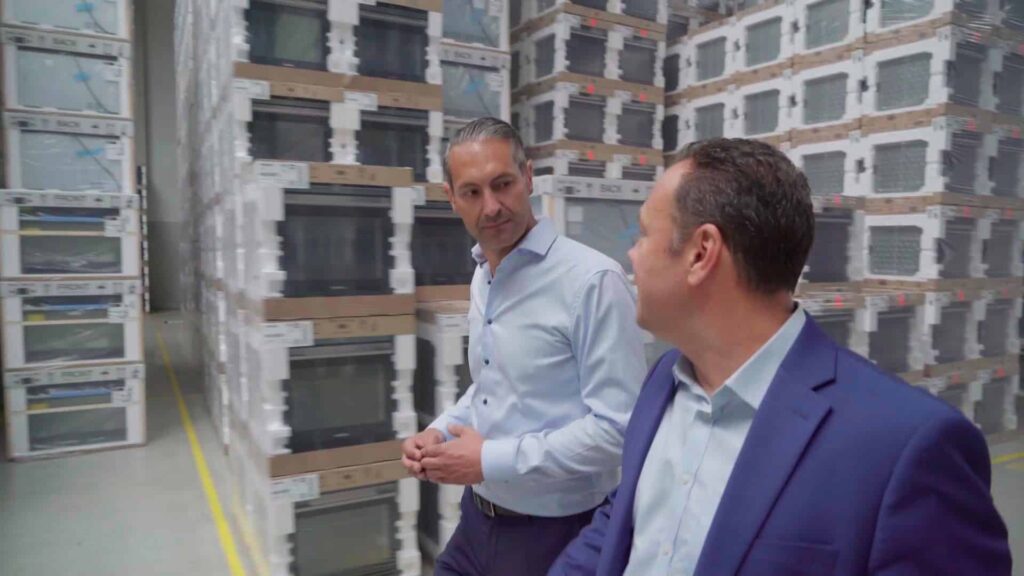BSH Home Appliances Group, one of the most powerful market leaders in household appliances, has been improving the quality of life in people’s homes through outstanding brands, high-quality products, and first-class solutions worldwide since 1967.
Offering more than 10,000 products to 50,000 customers in over 50 markets, BSH has a factory network of more than 40 sites and 150 warehouses and distribution centers. With the goal of making life better for customers through world-class home appliances and services, the company prides itself on product and supply chain innovation.
During the COVID-19 pandemic, answering the increasing demand for reliable products and delivery dates was particularly difficult. Moreover, changing long-term customer needs due to strong seasonality and new distribution channels were added as new challenges. The ongoing manual planning and execution processes at BSH were not enough to provide customers with the information they need, on-time and in the form they want.
Knowing the key to achieve risk resiliency in the ever-changing VUCA (volatile, uncertain, complex, and ambiguous) world is to enable transparency and visibility in supply chain operations, BSH Home Appliances Group chose the SAP Integrated Business Planning for Supply Chain solution and SAP S/4HANA to coordinate business planning and execution functions for enhancing the customer experience.

Building Risk Resilience in the VUCA World
Businesses are planning for the perfect world but executing in a VUCA world where things don’t always go to plan. As a global producer of home appliances, BSH needed to change the operating environment to match continuously increasing and changing demand to the restricted supply. To manage this, the company needed to build risk resilience within its supply chain operations.
BSH aimed to synchronize planning, manufacturing, and logistics operations to achieve high levels of transparency and visibility into supply chain operations for resolute and agile decision-making processes.
“No matter how well we can plan product allocation and order promising, if we’re not able to execute and deliver as planned, everything falls flat. We need synchronization and collaboration between our planning and execution functions,” says Bernard Czap, senior project leader S&OP Transformation & Order Promising at BSH.
The company followed a comprehensive process integration – from planning to order processing and fulfillment – while integrating sales and operations, production planning, and scheduling processes. With this seamless integration, the company can now manage bottlenecks, with allocation concepts to handle scarcity, allowing it to be more reliable when it comes to order promising and fulfillment.
Keeping the Promises High and Stock Levels Low
The company primarily followed two approaches for enabling this transformation. The first approach was to replace the previous push-based planning process with a pull-based system. This means designing the entire supply chain to adapt to unexpected changes instead of predicting what product variants customers would purchase in the upcoming months.
The second approach was to achieve a lean production system, which was seen as the key to stability. This required the ability to level product mix and volume, for example, by producing the same appliances every Monday at the same time and achieving a fixed structure to balance production and streamline suppliers’ processes.
With demand-driven material requirements planning (DDMRP), BSH now only produces the predefined quantity of appliances that have been removed from the warehouses. In other words, BSH produces what is sold. Also, by decoupling the inventory, BSH achieved a valuable buffer against unexpected disruptions by standardizing manufacturing operations. This enabled the company to reduce inventory costs while improving customer satisfaction.
“With demand-driven material requirements planning, we are reducing our stocks and improving our ability to deliver to our customers at the same time,” adds Michael Huber, global program lead for Digital Supply Chain at BSH.

Enable Demand-Driven Predictive and Prescriptive Planning
By leveraging SAP Integrated Business Planning for Supply Chain with SAP S/4HANA and establishing the sales and operations (S&OP) process, BSH can use forecasts as input parameters for calculating its stock. This enables the company to ensure that there are the right products in the right amount at the right time.
“With the SAP Integrated Business Planning application for response and supply, we consistently combine the tactical operational planning with the actual execution of day-to-day business – in other words, supply chain execution and fulfillment,” says Czap. “Bottleneck management, allocation concepts to handle scarcity, and to be much more reliable in what we tell our customers when it comes to order promising became the main capability to drive the company, especially in a notorious situation of worldwide supply shortages.”
With the SAP Integrated Business Planning application for demand, BSH has improved forecasting and sales planning with automated and semiautomated functionalities for demand sensing, not only for long-term but also short-term forecasting of products. The SAP Integrated Business Planning application for sales and operations helped bring cross-functional teams from across the company together to agree on the same figures. And the SAP Integrated Business Planning application for demand-driven replenishment helped ensure and improve the demand-driven supply of its multi-level value chain network.
“With SAP Integrated Business Planning for Supply Chain, we can now handle customer orders even better: which location must be supplied, when, and how so that production and logistics can coordinate their activities and deliver orders on time and as required,” says Dietmar Baumann, global program lead for Digital Supply Chain at BSH.
After the implementation success in China, BSH is planning to roll out the response and supply application company-wide, including integration with all its markets, factories, warehouses, and material groups. To ensure that planning is properly executed on the delivery side, the company is in the early stages of employing SAP Business Network for Logistics, SAP Transportation Management, and SAP Extended Warehouse Management that can be integrated with SAP Integrated Business Planning for Supply Chain and SAP S/4HANA.



